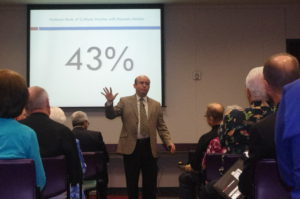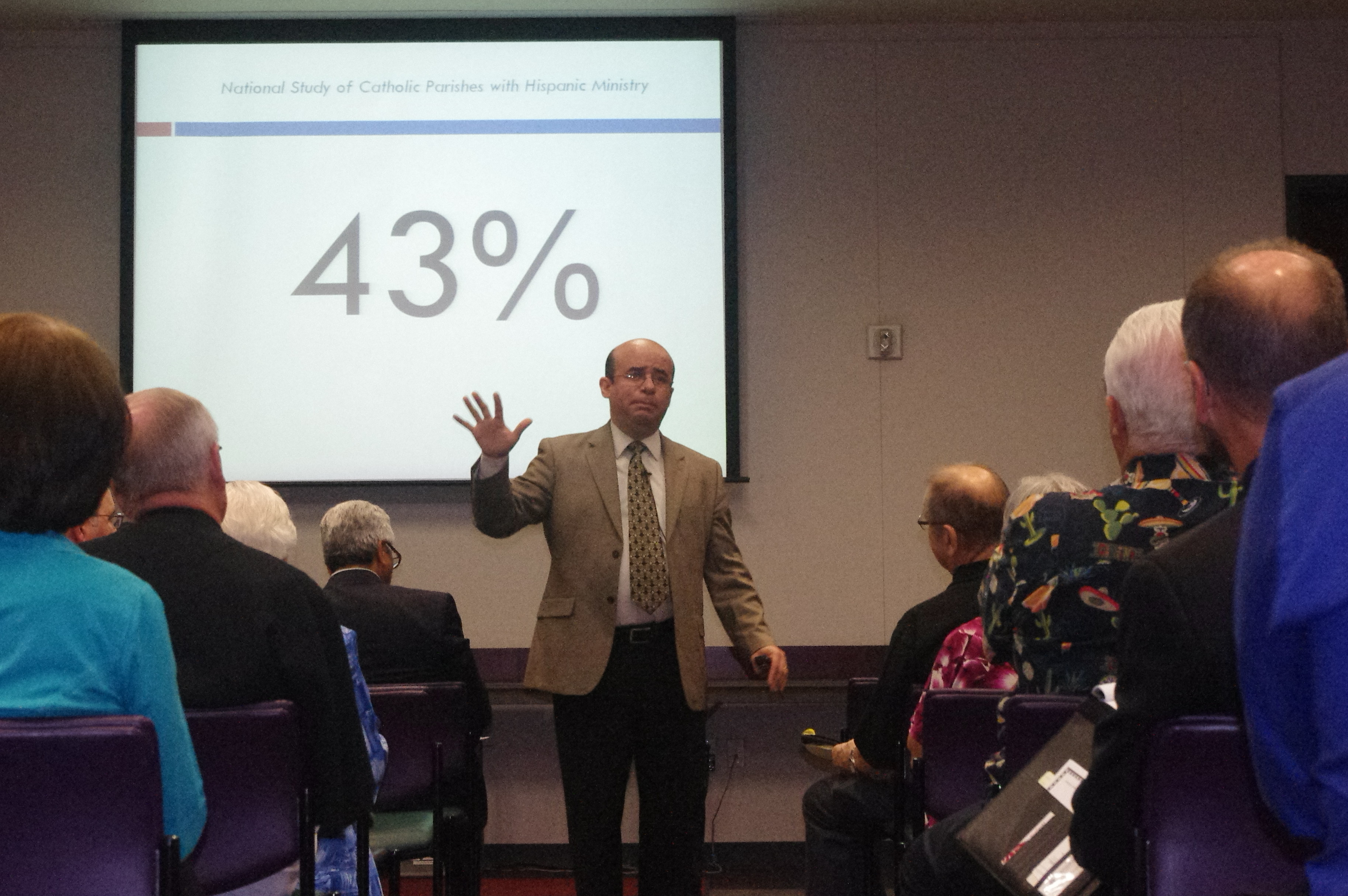Hosffman Ospino, an assistant professor of Hispanic ministry and religious education at Boston College, had a powerful message to deliver to clergy and lay leaders in the Diocese of Phoenix.

The face of the Catholic Church is changing swiftly and it’s crucial to reach out to young, U.S.-born Hispanics who are slipping away from the Church in staggering numbers.
Clergy as well as leaders in catechesis and youth ministry had an opportunity to hear Dr. Ospino’s startling presentation May 5 at the downtown Diocesan Pastoral Center.
Forty-three percent of U.S. Catholics are Hispanic, Ospino said, up from a miniscule three percent in the 1950s. The surge in numbers is due to immigration as as well as birth rates, he said.
A survey of parishes in the U.S. found that 99 percent of Hispanic ministry is geared toward an immigrant community, but that needs to change, Ospino said.
“Sixty-one percent of all Hispanics were born and raised in the U.S.,” Ospino said. “So the question is, if 99 percent of our efforts through the Catholic Church are with the immigrant community, what are you doing in Arizona for that 61 percent?”
En Español: ‘El Cambiante Rostro de la Iglesia Católica’ indica al crecimiento de Hispanos, necesidades
Dealing with the pastoral and spiritual needs of second- and third-generation Hispanics is a critical need, Ospino said, pointing to a 2014 study by Pew Research. The study revealed that one out of four Hispanics, or 25 percent of U.S Hispanics, are former Catholics.
[quote_box_right]
Hispanic Ministry in Catholic Parishes
[/quote_box_right]
“When you ask them, ‘Why did you leave the Catholic Church or why did you stop self-identifying as Catholic, the answer is … ‘I was never welcomed in the Catholic Church. Nobody told me that this is my home,’” Ospino said.
In an impassioned plea to local leaders, Ospino emphasized that immediate action is needed.
“You and I cannot afford to do what some communities have done in some parts of the country. They have refused to open their doors to the so-called minorities and would rather close or disappear,” instead of adapting to the demographic shift, Ospino said.
“We didn’t build the churches for ourselves. We built the churches, our schools and our communities for the people. And at this very moment, the majority of the people of God happen to be Hispanic, Asian, African-American and also a large number of white Catholics,” Ospino said.
Cristofer Pereyra, director of the diocesan Hispanic Missions Office, said Ospino’s presentation helped “open the eyes of many who were not aware of the rapid transformation the Church is undergoing” and provided valuable insights to clergy and lay leadership.







